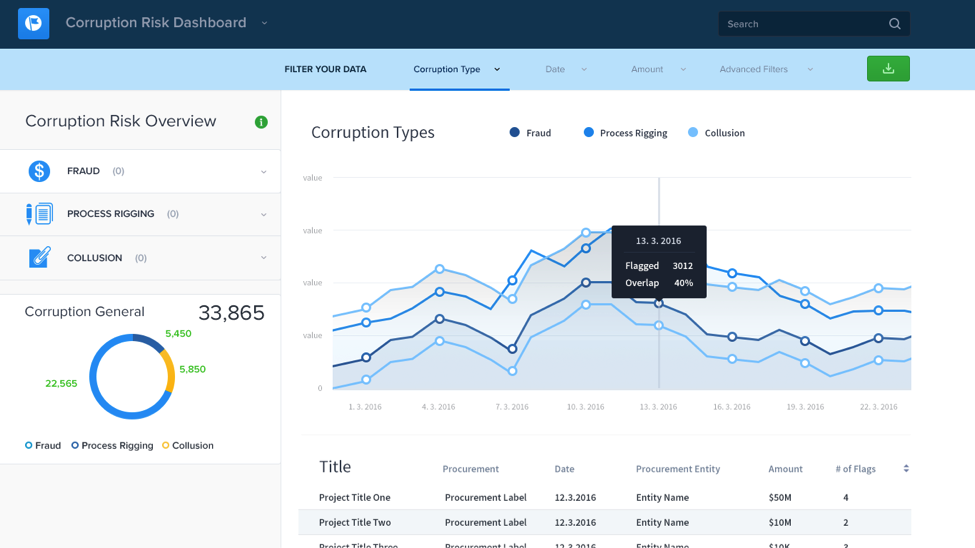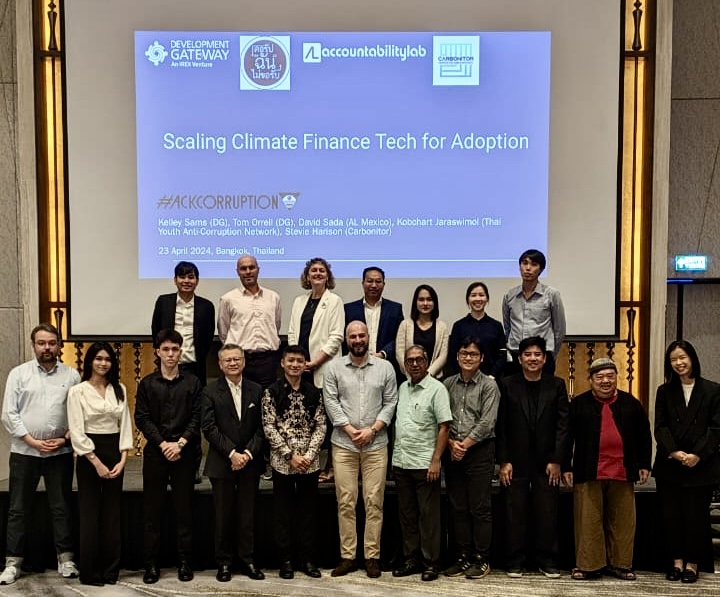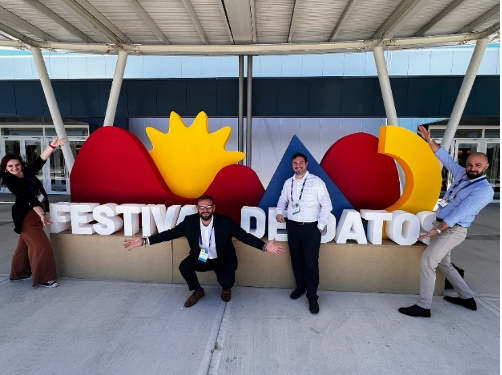Detecting Corruption Risk through Open Contracting
At this month’s Open Government Partnership (OGP) Global Summit in Paris, many government and civil society participants will be talking about open contracting. Dozens of countries — from Nigeria and Paraguay, to France, our hosts — are committing to implement the principles of open contracting as a core element of their strategies to reduce corruption and improve the allocation of public resources. By adopting the Open Contracting Data Standard (OCDS), some of these countries hope that disclosing procurement data in an open and useable format will help improve spending efficiency and generate public trust.
But there remain several hurdles to achieving the riches promised by open contracting in spite of the political will that these countries have expressed. Technical staff within governments do not always possess the resources and knowhow to implement open contracting. Even if openness is achieved, questions remain about the potential of disclosure alone to achieve the intended results. For governments and citizens to reap the benefits of open contracting, the appropriate question is not “how to be open?”. Rather, we must ask how we can use procurement data to identify and disrupt malfeasance, to gain value for money, and to improve efficiency and the quality of service delivery.

Assessing Procurement Efficiency & Competition
At Development Gateway (DG), our approach to gaining value from procurement data has been to focus on distinct use cases. To garner insight into questions of the efficiency and competitiveness of procurement, we have been developing a dashboard in collaboration with the Vietnam Public Procurement Authority (PPA). The tool, which converts government data to OCDS, helps the PPA to address a variety of priority questions about the performance of procurement entities, the suppliers bidding for government contracts, and the methods and processes in use.
Red Flagging & Corruption Monitoring
To help identify corruption risk and support the efforts of investigators to target specific contracts, DG is developing a red flag tool with the collaboration and support of the Open Contracting Partnership. The Corruption Risk Dashboard can sift millions of public tenders and contracts using high-powered data analytics to identify patterns and discrepancies associated with specific corruption types. The aim of this tool is not to reveal corruption, but to aid key stakeholders — from government, the media, and civil society — to focus their resources on investigating the contracts most prone to corruption risk. The Corruption Risk Dashboard integrates with DG’s procurement efficiency and competition dashboard, and benefits from its OCDS conversion tool.
Our Corruption Risk Methodology
In lieu of a physical investigation, it can be difficult to attribute certainty to any data-based approach to corruption identification. Consequently, our approach, outlined in a freshly published report co-authored with OCP, aims to identify the risk of corruption by triangulating indicators that point to the possibility of specific corruption types:
- Fraud: when a bidder falsifies information submitted to the procuring entity;
- Collusion: when bidders work among themselves to try to obtain particular outcomes;
- Process rigging: when government officials distort the procurement process, whether in collusion with suppliers or in demand of a kickback, to seek a certain outcome.
This approach, and the more than 60 indicators we’ve developed, builds off the work of the likes of the International Anti-Corruption Resource Center, DigiWhist, and the Government Transparency Institute (Budapest). It also benefits from our experience building procurement analytics tools in Vietnam and Nepal, and conducting open contracting scoping studies in five West African nations and countries throughout Asia.
Promising Results

Thus far, our indicators have shown promise in identifying a subset of contracts at risk for the three forms of corruption that we’ve targeted. If you’d like to learn more, we will be discussing our methodology and results in two sessions at OGP, so please join us at the following events:
December 9, 10:45 am: Leveraging Big Data to Combat Corruption in Government Procurement
December 9, 2:00 pm: Tools & Strategies to Transform Public Contracting
For our internet audience, we’ll summarize our findings upon our return.
Share This Post
Related from our library

The Future of Technology Governance and Global Development: Why DG Brought DataReady In-house
DG is excited to announce we now have more robust data governance advisory services with the recent integration of DataReady.

Letting the Sunshine in: Building Inclusive, Accountable, and Equitable Climate Finance Ecosystems
In April, DG, HackCorruption, and the Thai Youth Anti-Corruption Network hosted a roundtable in Bangkok to discuss climate financing. This blog explores the main takeaway: a multi-disciplinary and multi-stakeholder approach that prioritizes local contexts, inclusive governance, transparency, accountability, and equitable distribution of resources is essential to impactful climate financing.

Developing Data Systems: Five Issues IREX and DG Explored at Festival de Datos
IREX and Development Gateway: An IREX Venture participated in Festival de Datos from November 7-9, 2023. In this blog, Philip Davidovich, Annie Kilroy, Josh Powell, and Tom Orrell explore five key issues discussed at Festival de Datos on advancing data systems and how IREX and DG are meeting these challenges.